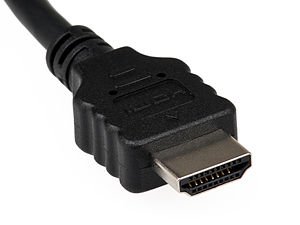This is the summary of the previous five articles looking at the different video signals and connectors commonly used in Home AV. Previously we have discussed Composite video, S-video, RGB video, Component video and HDMI.
So which cables, plugs and sockets should you use? It depends on what outputs your other devices have. Below is the basic hierarchy for cables and connectors when connecting devices to your flat screen TV or projector
This is what I call the hierarchy table of video signal cable.
The best quality, and the simplest connection is HDMI. If you can connect all your devices using HDMI, then you probably don’t need to worry about all the other connections. It is also the simplest as it has the video and audio all in one cable.
The next best quality is to use Component video. You need three cables for the video (red, blue and green) and two for the audio (red and white). Simply connect the green socket from the DVD player to the green socket on the flat screen TV. Do likewise for the blue and red connectors. Then use the red and white audio connectors to connect the audio.
After HDMI and Component video, the next best video connection is S-video. It is not always available, but if it is available, it gives better quality video than Composite video. It may also be difficult to find a S-video cable, but it is worth it if you can. You also need to connect the red and white for the audio.
Finally, if no other connections are able to be used, you can use the basic Composite video. This is most common when connecting a VCR to your flat screen TV. This uses the yellow connection for the video, and the read and white connections for the audio.
All the above cables will work. However I suggest it is simpler (and you get better quality) to follow the above table when connecting your equipment.
In other articles we will use the hierarchy table of video signal cable as a reference when looking at connecting your AV equipment.




